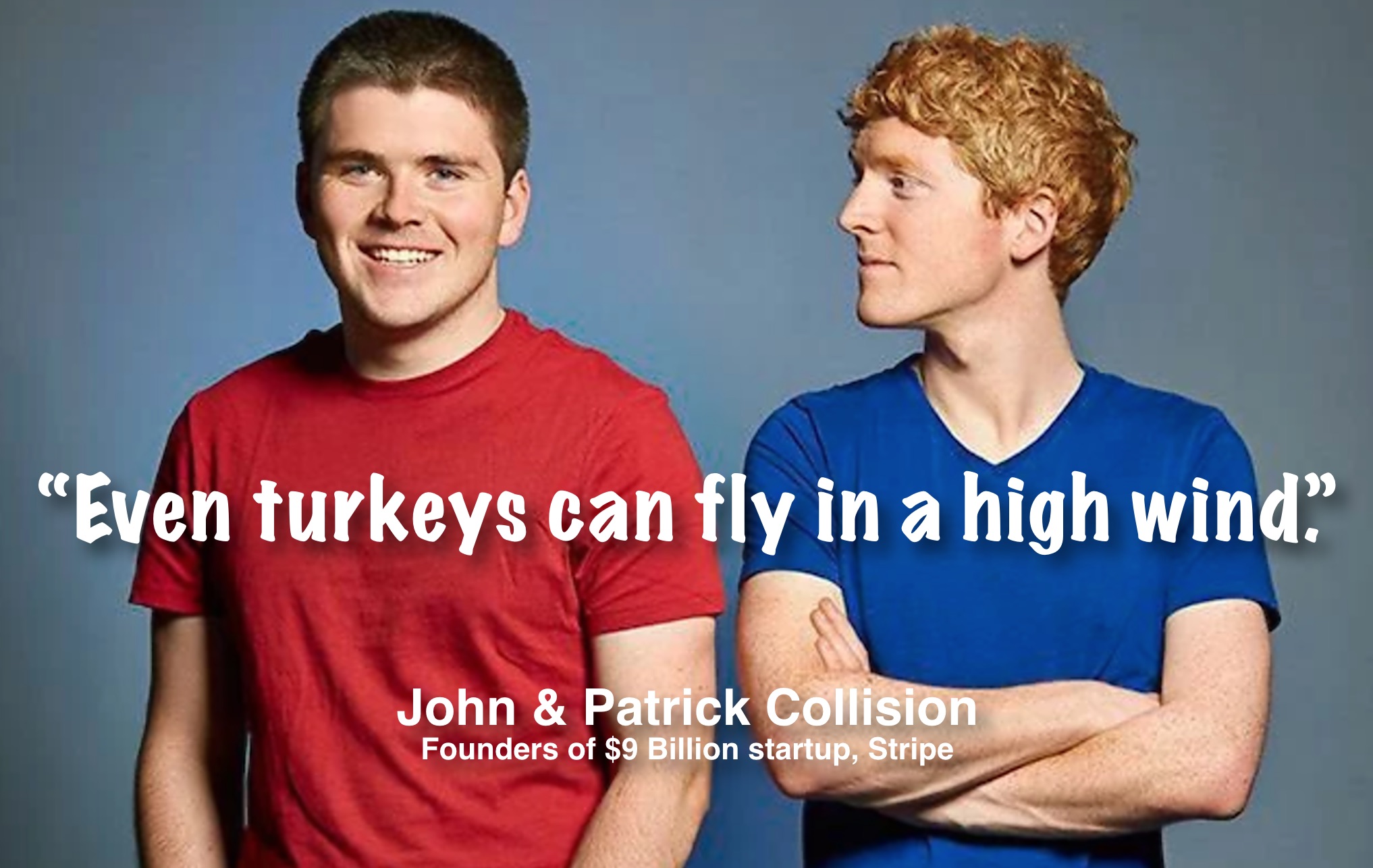
While many are busy spending money on Thanksgiving Weekend, others are making money. Like Irish brothers, 28-year old Patrick and 26-year old John Collision, who just doubled the value of their startup, Stripe to $9 billion after raising another $150 million.
How did they grow their startup so fast? Here’s their 3 simple not-so-simple steps:
Step #1: Solve a bigger problem
As teenagers, in 2007 Patrick and John started their first company, Auctomatic - giving eBay users better software to help sell online. A year later (at 17 and 19 years old) they sold the company to Canada’s Live Current Media.
Deciding what to start next, it took them 3 years before launching Stripe in 2010. The idea was simple - Make mobile online payment so easy that any site could add a pay button and start collecting money within 30 minutes.
But if the idea was that simple, why hadn’t others figured it out already? Because of “Schlep Blindness”.
As Y Combinator founder, Paul Graham (who mentored the brothers) explains:
“The most striking example I know of schlep blindness is Stripe, or rather Stripe’s idea. For over a decade, every hacker who’d ever had to process payments online knew how painful the experience was. Thousands of people must have known about this problem.”
“And yet when they started startups, they decided to build recipe sites, or aggregators for local events. Why? Why work on problems few care much about and no one will pay for, when you could fix one of the most important components of the world’s infrastructure?"
"Because schlep blindness prevented people from even considering the idea of fixing payments.”
“Probably no one who applied to Y Combinator to work on a recipe site began by asking “should we fix payments, or build a recipe site?” and chose the recipe site. Though the idea of fixing payments was right there in plain sight, they never saw it, because their unconscious mind shrank from the complications involved.”
Don’t be fooled into thinking the biggest ideas are the most complicated. They are almost always the simplest. But - like the Collisions - you need the courage to commit to solving the biggest problems in the smartest way.
Step #2: Partner with the world’s best
When they started Stripe, instead of just focusing at the product, the brothers focused at what world-class partners they wanted to work with, and started by tailoring solutions for each one.
They did deals with Alipay in China and American Express. They brought on brand name clients like Macy’s, Bloomingdales, Adidas, Yelp and Slack. During this year’s General Elections, Stripe did deals with both presidential campaigns, making a cut on all donations to either party.
At every step, they kept developing the product based on what these top level partners wanted - instead of focusing on sales and marketing to get smaller customers.
Quoting Kleiner Perkins founder, Eugene Kleiner, Patrick says “Even turkeys can fly in a high wind”, explaining, “With enough sales and marketing you can make even a really crappy product successful. I think by not doing any marketing for a long time we were making sure we weren’t this hapless floundering turkey.”
Who could you partner with who is committed to solving the same problem that you are? So that you can co-create a revenue-generating solution together?
Step #3: Make your competitors your investors
For funding, Patrick and John took the same approach as Thomas Edison. He raised funding for his electric light bulb from the gas companies that were in danger of losing out when electricity arrived.
Patrick and John followed the same strategy, raising funds from Visa and American Express - who had the most to lose from a mobile payment platform that made paying easier than their credit cards.
Even their first funding took the same route. Knowing they would be competing with PayPal, they approached the original founders of PayPal with their vision, leading to their very first round of funding coming from PayPal founders, Elon Musk and Peter Thiel.
With their next step working with tech companies like Slack, Twitter and Google to put one-click “Buy” buttons across the Internet, it was logical to approach the same companies for funding, leading to the current $150 million round that closed today being led by “CapitalG” - The new name for Google Capital.
That doubled the value of Stripe to $9 billion on Black Friday.
Who could you go to who has the most to lose from your success? And what is the common mission you share together.
For Patrick and John, their mission is one that all their partners and investors share: As they brother say: “We want to increase the GDP of the internet.”
















Leave a Reply